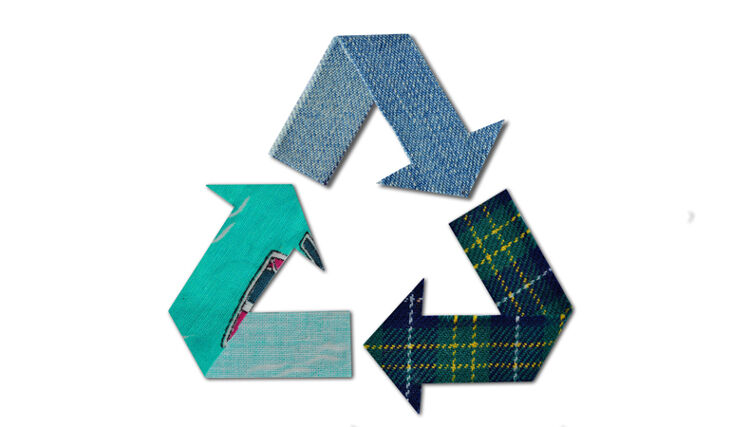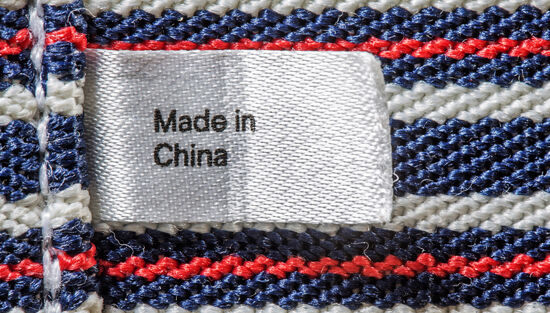Regulation guidance: Strategy for Sustainable and Circular Textiles

What is the Strategy for Sustainable and Circular Textiles, what does it include and what does the print industry need to consider now to get ahead of compliance? Sustainability communications specialist Rachel England outlines the key facts.
Textile consumption in the EU has a significant impact on its environmental ambitions. After food, housing and mobility, textiles have the fourth-highest impact on climate change. They also represent the third-highest area of consumption for water and land use, and the fifth-highest for the consumption of primary raw materials and creation of greenhouse gases. The Strategy for Sustainable and Circular Textiles (SSCT) aims to address these impacts.
What is the Strategy for Sustainable and Circular Textiles?
Born of the 2019 European Green Deal and the 2020 Circular Economy Action Plan (CEAP), the SSCT was adopted by the European Parliament in 2023. It encompasses a range of measures and regulations that should enter force by 2030, focused on:
-
Extending the life of textile products
-
Introducing mandatory eco-design requirements
-
Addressing the release of microplastics from synthetic textiles
-
Stopping the destruction of unsold or returned textiles
-
Encouraging reuse and recycling
Considered a directive, the strategy sets minimum standards for EU member states.
How is the strategy enacted?
The strategy is supported through a range of measures:
-
The Ecodesign for Sustainable Products Regulation (ESPR), which creates a framework of design requirements for products, including textiles. This regulation calls on companies to become more circular, make materials more durable and/or recyclable, adopt waterless dyeing methods, reduce harmful printing chemicals, among other measures.
-
The Empowering Consumers in the Green Transition Directive and Green Claims Directive, which aim to tackle greenwashing.
-
The Waste Shipment Regulation, which restricts the export of textile waste.
-
The Waste Framework Directive, for which a revision has been proposed to introduce mandatory Extended Producer Responsibility schemes for textiles in EU member states.
-
Updates and revisions to the Textile Labelling Regulation.
-
New legal norms under the EU Industrial Emissions Directive, designed to tackle pollutants arising from bleaching, dyeing and finishing treatments.
-
A new, mandatory digital product passport that includes information on the durability, reparability, recycled content, and materials used in textile items, designed to ensure transparency, fairness and credibility across the supply chain.
What does this mean for printers?
The SSCT poses difficulties for textile printers, as they may not sit squarely within the textile industry per se but rather depend upon its supply chains and partnerships for key operations. As such, printers will need to consider how their sourcing, manufacturing and end-of-life processes incorporate textiles. Companies should also be mindful of their position within other business supply chains – as bigger companies seek SSCT compliance they will increasingly favour suppliers and providers that can demonstrate their own sustainability credentials.
How are EU countries enacting the SSCT?
Member states across the EU are already rolling out regulations in alignment with the SSCT. In France, the Anti-Waste Law for a Circular Economy requires brands to establish systems for collecting and recycling textile waste, as well as transparently disclose information on the greenhouse gas emissions, water consumption and waste production.
In the Netherlands, an Extended Producer Responsibility for Textiles regulation requires brands to prove that textile waste is properly recycled or reused, and companies must complete a one-time registration at the government agency responsible for managing water systems. And in Germany, the Supply Chain Due Diligence Act requires brands to adopt rigorous due diligence processes throughout their supply chains. Of particular relevance to printers, this includes monitoring and reporting on the creation and use of pollutants, as well as the handling of hazardous waste.
How has the industry responded to the SSCT?
As is the case with many of the sustainability-orientated regulations and directives, the SSCT has prompted mixed reactions. Some, for example, are concerned that the strategy will hinder competitiveness and create economic obstacles. When the European Parliament first adopted its report on the strategy in June 2023, Euratex – the European Apparel and Textile Confederation – condemned it for “disregarding the current economic challenges caused by high energy prices, loss in consumer confidence and assertive trade partners”.
Commenting on the report, the Director-General of Euratex, Dirk Vantyghem, said: “We welcome the strong interest of the European Parliament in the textile and fashion industry, but encourage MEPs to develop a balanced vision which reconciles sustainability and competitiveness.” The company went on to say: “Putting the bar even higher will simply mean that the European textile industry will be pushed out of the market, resulting in a bigger environmental footprint and increased dependency on foreign supplies.”
Some see the strategy as an opportunity for brands and companies to differentiate themselves. Steffen Meiler, Global Director of Sportswear at Kornit, says: “In 2007, I worked on a recycled textiles project with Patagonia. While the market wasn’t fully prepared then, circumstances have since evolved.
“Sustainability remains a key topic, and businesses are considering how to integrate it effectively. Consumers are increasingly informed, and industry trends indicate a shift in market dynamics, influenced by various stakeholders.”
Meiler notes that these changes pose challenges, particularly for smaller businesses with limited resources. “At a recent conference, I heard about companies hiring additional personnel just to manage compliance documentation. At the same time, energy costs fluctuate, and market demand varies, making it a delicate balance.”
“Companies need to assess their long-term strategies,” says Meiler. “Navigating these changes re-quires ongoing adaptation and consideration of future market positioning.”
What do printers need to do to align with the Strategy for Sustainable and Circular Textiles?
It’s critical that companies – however they’re involved with textiles – have a clear understanding of their products’ environmental impact throughout their entire lifecycle. Gathering and consolidating data can be time-consuming, but since a lot of the reporting required will be retroactive, it’s important to have the right processes in place sooner rather than later.
Shifting to sustainable printing materials such as non-toxic, biodegradable and water-based inks should be high on the agenda, and support and guidance can be found in the form of the Transition Pathway for the Textiles Ecosystem, and the European Circular Economy Stakeholder Platform, which promotes and fosters cooperation between industry, public authorities, social partners and other stakeholders. The new ‘Textiles of the Future’ partnership – announced by the European Commission in March 2024 – also has opportunities for funding to support research and innovation around sustainable textiles.
“Companies need to be bold, but it’s a journey of continuous improvement,” says Meiler. “These challenges are not going to go away. You have to consider where you want to be in five or 10 years. Do you want to stay in an increasingly volatile situation, or make changes now and be at the front of the market?”
Become a FESPA member to continue reading
To read more and access exclusive content on the Club FESPA portal, please contact your Local Association. If you are not a current member, please enquire here. If there is no FESPA Association in your country, you can join FESPA Direct. Once you become a FESPA member, you can gain access to the Club FESPA Portal.
Recent news

Regulation guidance: Corporate Sustainability Reporting Directive
The Corporate Sustainability Reporting Directive (CSRD) is now in effect, but with further changes on the horizon, what does it mean for printers? Sustainability consultant Rachel England outlines everything you need to know and talks to Apigraf about how your business may be affected.

Web-to-print design: Canva versus Kittl
We look at popular design packages Canva and Kittl to determine how they compare regarding graphic design and print on demand.

FESPA in South Africa: the print skills to thrive
Printing SA’s Career Day inspired young Cape Town learners to explore printing and packaging careers.

The rise of Chinese printers
Chinese printing companies are on the rise, and have their eyes set on the UK and EU marketplace. Some have made an instant impact; others are running into issues with maintenance and language barriers. What does the future hold for Chinese printing firms, and how can you navigate working with them?